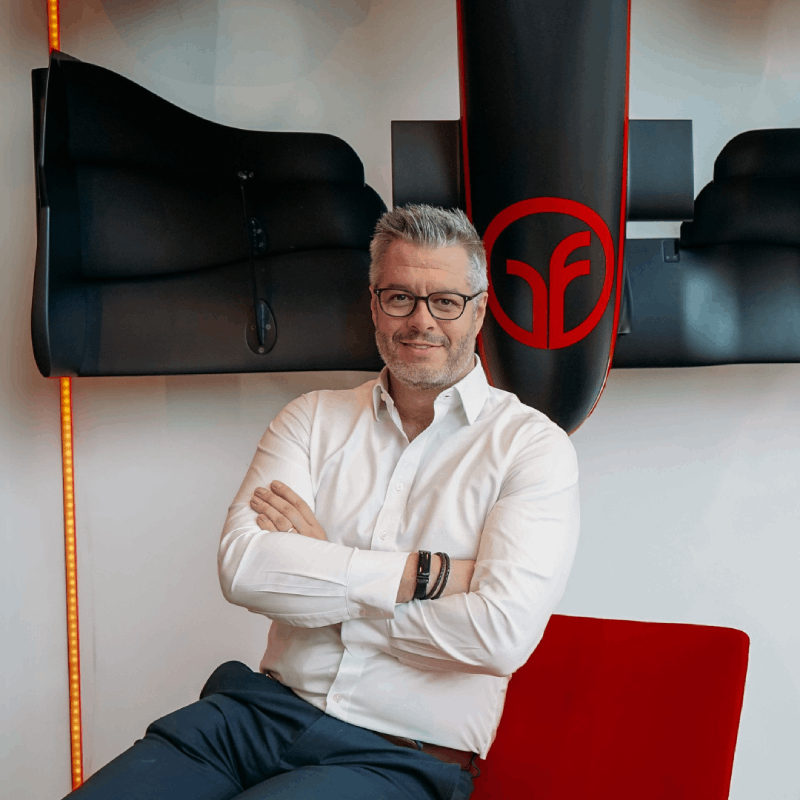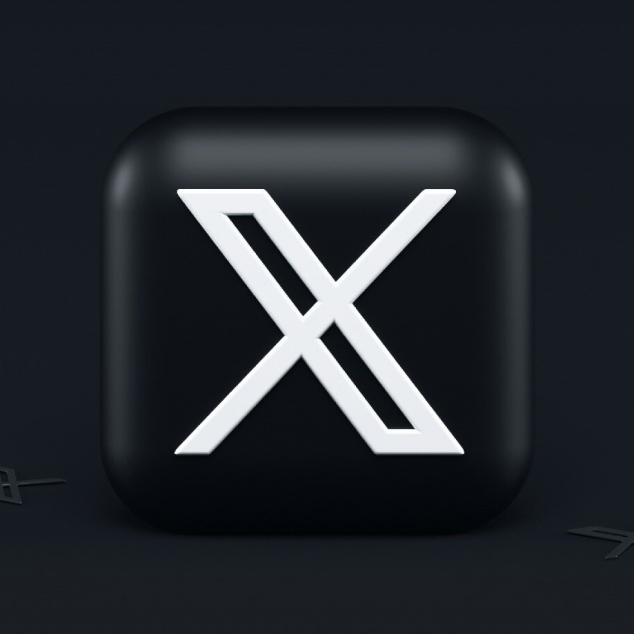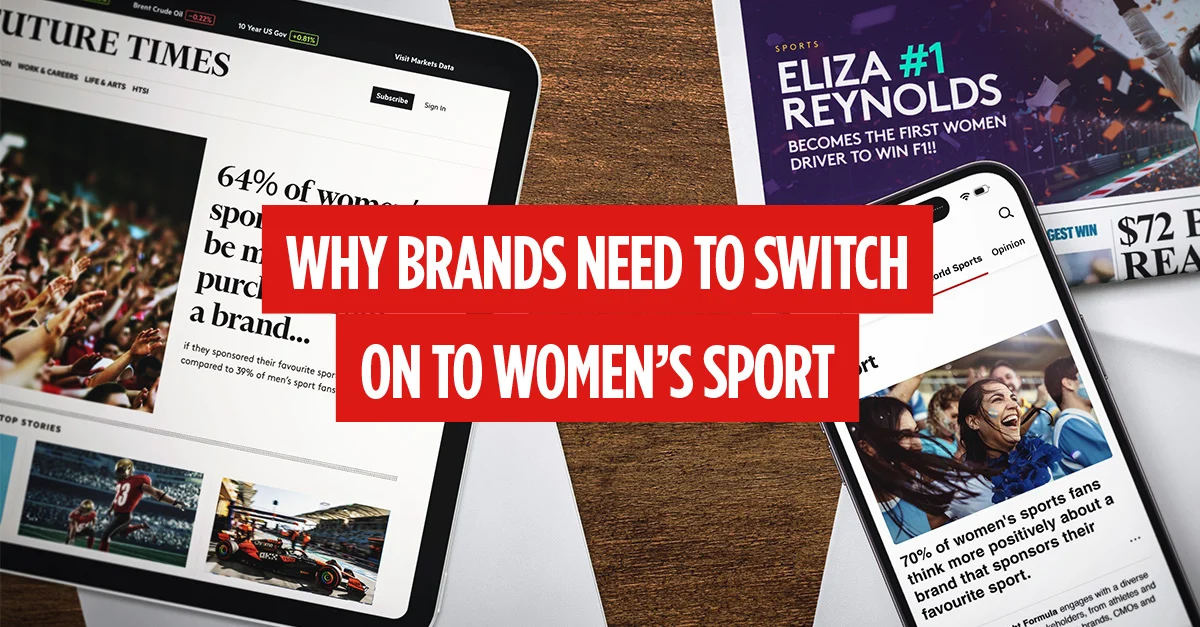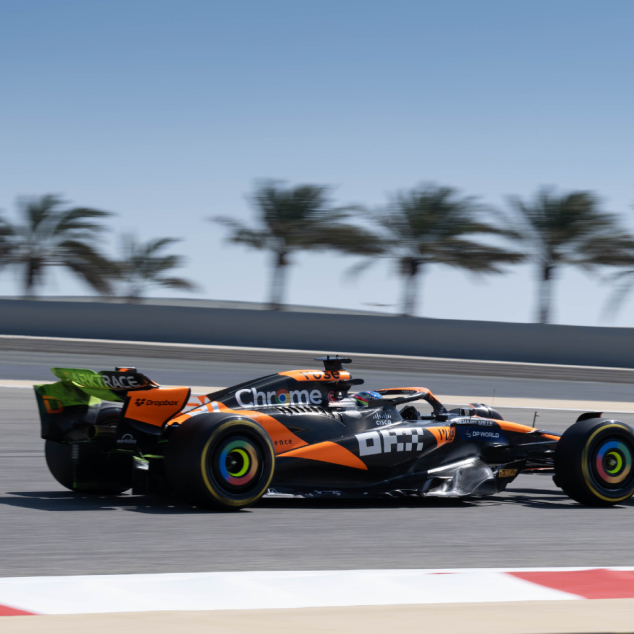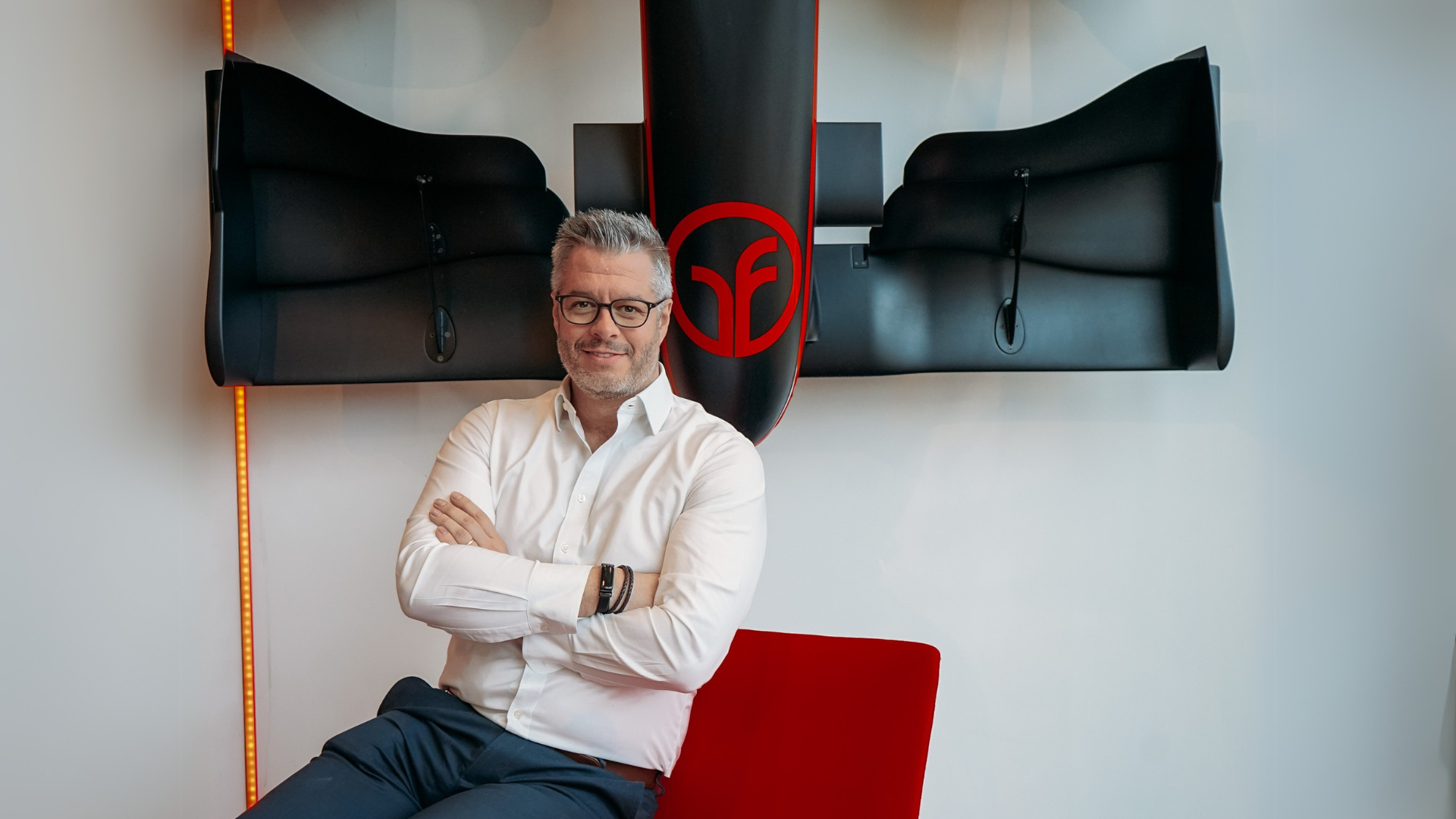
In Conversation: Paul Gandolfi, Chief Commercial Officer at Right Formula
As sports sponsorship evolves, brands seek more than just visibility; they want authenticity, impact, and tangible business value. Few understand this better than Paul Gandolfi, the newly appointed Chief Commercial Officer at Right Formula.
Paul joined Right Formula following a five-year tenure at Scuderia Ferrari, where he led the commercial operation as Vice President of Business Development. During his time with the iconic Italian team, he was pivotal in securing high-profile partnerships, including a significant naming rights agreement with HP. This deal marked Ferrari’s first title partnership since 2021 and underscored Paul’s ability to align global brands with elite motorsport entities.
We sat down with Paul to discover his insights on what makes a successful partnership, the evolving role of technology in sports, and why Formula 1 remains such a powerful platform for brands.
What was the ambition behind your move to Right Formula?
I like the fast-paced, autonomous nature of agency work. It’s no secret that Right Formula is going through an unprecedented stage of growth and establishing itself as a credible and clear leader in F1 partnerships.
I also like to join organisations where there is a bit of a journey to go on. I’m really excited about making an invaluable contribution, especially on the commercial side, to fuel the next stage of our growth.
You’ve got over 20 years of experience in sports marketing, connecting some of the most iconic brands to sports teams and personalities. In your opinion, what are the hallmarks of an impactful sports partnership?
So many things! I’ll try and narrow it down. There are probably four clear factors. The first is authenticity. If partnerships are not authentic, audiences are smart enough to see through them. The second is for rights holders to avoid thinking purely transactionally. There should always be a two-way, meaningful dialogue and an alignment on brand values and synergies. Third is positive cultural impact. There is more emphasis today on brands to demonstrate a positive impact on culture, society, and diversity and inclusion. The fourth point is something I started to see more in the last couple of years, which is building the business case to take internally. If you do that, you get more senior stakeholder buy in, and it’s a great way to start the partnership.
Is there a collaboration that sticks out in your mind as a particularly strong example of how sports partnerships can work?
I’m going to mention something that most people in the industry would reference: P&G’s Thank You, Mom campaign during the Olympics. I think it was absolutely perfect. It built an emotional connection with audiences and was incredibly authentic, which, as I said earlier, any partnership needs to be. It tapped into the Olympic Games’ spirit and was culturally and globally relevant. P&G did such a great job because they found an authentic and compelling narrative that only they could tell. I think it was so well executed, and everybody could relate to it.
You’ve worked for some incredible brands in your career to date, including the Scuderia Ferrari team most recently. What partnership are you most proud of having forged to date?
That’s a tough question because I really like them all. Over five years, I’ve probably worked across 15 new partnerships. I’ll say two. First, I really liked the partnership between Scuderia Ferrari and Peroni. It fused together two iconic Italian brands that were very much at the epicentre of lifestyle and culture. They’ve won quite a lot of awards off the back of it, so clearly something is connecting with audiences.
I must also mention the HP title deal. It took months of hard work, pulling in expertise from both businesses, but it felt like the right partnership at the right time. We realised early on that both Ferrari and HP started in a garage, so it felt like the story was written already.
What is it about F1 that makes it such a compelling sport for brands to get involved in?
This is the biggest I’ve seen our sport in a long time, and I still don’t think it’s reached its peak, which is hugely exciting. Unlike other global properties, like the Olympics or the World Cup, which happen every four years, F1 is truly global and runs almost all year-round – 24 races across 22 countries and five continents.
Liberty Media has also done a great job broadening the appeal of the sport. They’ve taken it into new territories, such as lifestyle and entertainment, which has opened the door to non-traditional audiences. For example, Drive to Survive has done a hell of a job for the US market. The US market has always been very motorsport-heavy but historically engaged less with F1, which has always been seen as a European platform. That’s all changing now. Liberty’s approach has added more lifestyle, glam and entertainment factor. I remember when they first took over, I saw a quote which was so perfect. They said they wanted to create the equivalent of 24 Super Bowls, and I thought that was so well put.
I think the audiences of Drive to Survive highlight a growing trend of fans who are not following teams but following more drivers. Motorsport purists have their favourite team, and that will never change, while the newer wave of audiences tends to lend themselves more towards a particular driver than a team. So, it’s difficult – you have to cater to these different audience segments.
From an F1 partnership perspective, what’s the #1 trend should we keep an eye out for?
I don’t think we’ve plateaued yet on technology. F1 and technology go hand in hand, and F1 has become such a compelling platform for technology companies to really showcase their products and services in a challenging, extreme environment. Most consumers will not be aware of the many technologies developed in F1 which have now translated into the cars we all drive today, whether it’s lightweight carbon fibre parts or energy recovery systems. These have been spearheaded, developed and championed in F1 and filtered their way through to the automotive sector.
Looking ahead, I’d keep an eye on emerging technologies that could give teams even the smallest competitive edge. Teams constantly search for new ways to improve in a sport where every millisecond matters. Where they aren’t experts, they forge partnerships with companies that can help them push boundaries even further.
On the need for technology partners to provide technology that actually assists the team: You need that, absolutely. It goes back to the authenticity piece, right? It’s such an authentic narrative for a leading technology company to say, “This F1 team is using our product suite, and because of that, we’ve made them faster, more efficient, and more secure.” To be able to tell that story to a global customer base, whether through content development, hosting at the track, or technical testimonials, is powerful.
What’s your first sporting memory?
That’s an easy one. Roberto Baggio missing the penalty kick in the ‘94 World Cup Final against Brazil in the USA. I’ll never forget that moment. My heart broke for him because he got them to the final and then he missed that. I remember being in front of the TV watching, and I just wanted the ground to swallow him up.
What’s one sporting moment you wish you could re-live or that you’ll never forget?
That’s an easy one, as well. Johnny Wilkinson’s drop goal in the 2003 Rugby World Cup final. England is still the only northern hemisphere team to have won it, which will certainly annoy a lot of the French people in our office. That was iconic. If you haven’t seen Building Jerusalem on Netflix, it’s fantastic, and they capture that moment so well.
